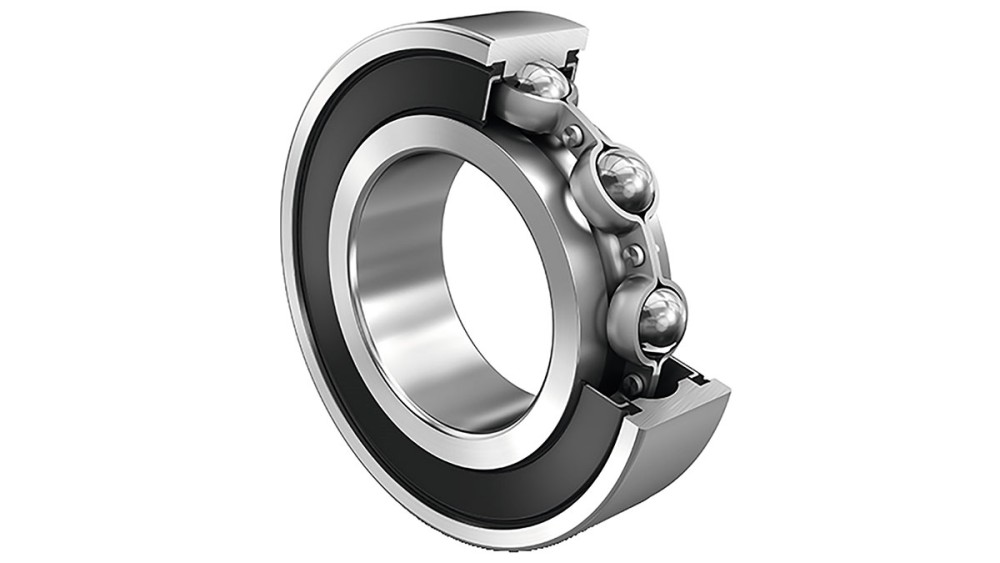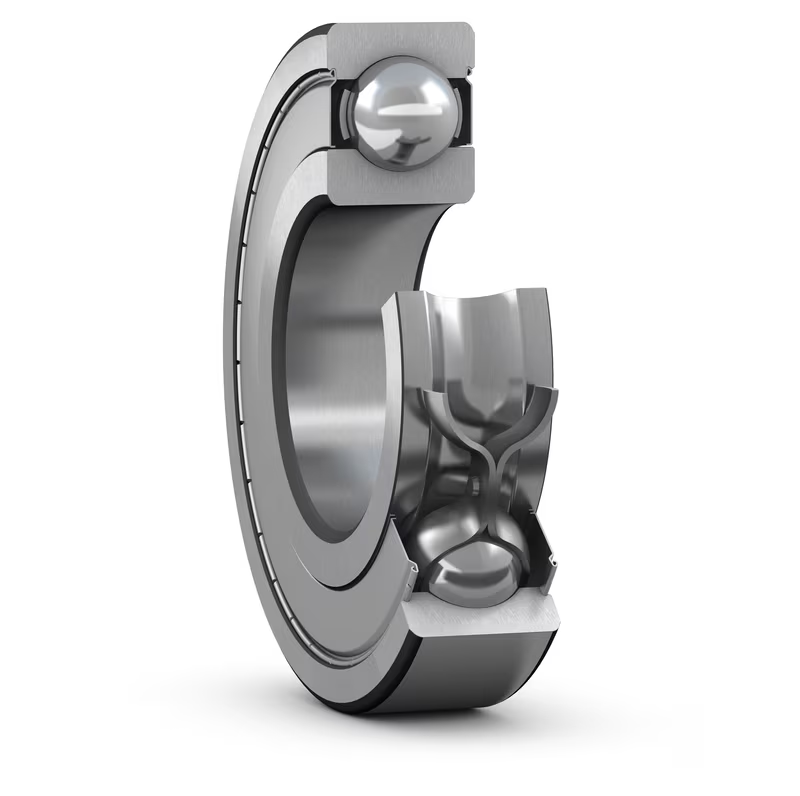What are the signs of wear or damage in deep groove ball bearings, and when should they be replaced?
Deep groove ball bearings, like any mechanical component, can experience wear or damage over time. It is important to identify the signs of wear or damage in bearings and know when they should be replaced to prevent further issues. Here’s a detailed explanation of the signs of wear or damage in deep groove ball bearings and when they should be replaced:
- Abnormal Noise:
- Excessive Vibration:
- Increased Temperature:
- Irregular or Uneven Operation:
- Visible Wear or Damage:
- Lubrication Issues:
- Operating Conditions:
Unusual noises, such as grinding, clicking, or rumbling sounds, can indicate bearing wear or damage. These noises may occur during operation and can be an indication of insufficient lubrication, misalignment, or the presence of foreign particles. If abnormal noise is detected, it is recommended to inspect the bearings promptly and replace them if necessary.
Excessive vibration during operation can be a sign of bearing wear or damage. Vibrations may occur due to misalignment, imbalance, or the presence of faulty bearings. If the vibration levels are unusually high and cannot be attributed to other factors, the bearings should be inspected and replaced if needed.
Significantly increased operating temperature of the bearings can indicate wear or damage. Excessive friction caused by worn-out or misaligned bearings can generate excessive heat. If the temperature of the bearings exceeds the recommended operating limits, it is advisable to investigate the cause and replace the bearings as necessary.
Irregular or uneven operation of the equipment or machinery can be a symptom of bearing wear or damage. This may manifest as erratic or jerky movements, decreased performance, or decreased efficiency. If such irregularities are observed, the bearings should be inspected to determine if replacement is required.
Physical inspection of the bearings can reveal visible signs of wear or damage. These signs may include pitting, rust formation, scoring, or discoloration on the bearing surfaces. Excessive wear or damage that affects the smooth rolling motion or integrity of the bearings should prompt immediate replacement.
Problems with lubrication, such as inadequate or contaminated lubricant, can contribute to bearing wear or damage. Insufficient lubrication can lead to increased friction, heat generation, and accelerated wear. If lubrication-related issues persist despite proper maintenance, it may be necessary to replace the bearings.
The operating conditions of the equipment or machinery can also influence the lifespan of deep groove ball bearings. Factors such as heavy loads, high speeds, extreme temperatures, exposure to corrosive environments, or prolonged use can accelerate wear or damage. In such demanding conditions, bearings may need to be replaced more frequently to ensure reliable operation.
It is important to note that the timing of bearing replacement depends on various factors, including the severity of wear or damage, the criticality of the application, and the manufacturer’s recommendations. Regular inspection and maintenance practices, as well as monitoring of the aforementioned signs, can help determine the appropriate timing for bearing replacement. Consulting with bearing manufacturers or maintenance professionals can provide valuable guidance in assessing the condition of deep groove ball bearings and making informed decisions regarding replacement.
In summary, signs of wear or damage in deep groove ball bearings include abnormal noise, excessive vibration, increased temperature, irregular or uneven operation, visible wear or damage, lubrication issues, and demanding operating conditions. Prompt replacement of bearings exhibiting these signs is essential to prevent further damage, avoid equipment failure, and ensure the continued smooth and reliable operation of machinery or equipment.
What advantages do deep groove ball bearings offer compared to other types of bearings?
Deep groove ball bearings offer several advantages compared to other types of bearings, making them a popular choice for many applications. Here’s a detailed explanation of the advantages of deep groove ball bearings:
- Versatility:
- High-Speed Performance:
- Low Friction and Energy Efficiency:
- Quiet and Smooth Operation:
- Simple and Cost-Effective Installation:
- Wide Availability and Standardization:
Deep groove ball bearings are highly versatile and can accommodate both radial and axial loads. This versatility allows them to be used in a wide range of applications, eliminating the need for multiple specialized bearings. Their ability to handle different load types simplifies inventory management and reduces the complexity of bearing selection.
Deep groove ball bearings are designed for high-speed operation. The smooth, low-friction rolling contact between the steel balls and the raceway grooves enables them to rotate at high speeds with minimal heat generation. This makes them suitable for applications that require fast rotational speeds, such as electric motors, turbines, and machine tool spindles.
Deep groove ball bearings offer low-friction operation due to the rolling contact between the balls and the raceway grooves. This results in reduced energy losses due to friction, making the bearings more energy-efficient. The low-friction characteristics contribute to improved system efficiency, reduced power consumption, and longer operating life.
Deep groove ball bearings provide quiet and smooth operation. The rolling contact between the balls and the raceway grooves produces less noise and vibration compared to other types of bearings. This makes deep groove ball bearings suitable for applications that require low-noise operation, such as household appliances, office equipment, and precision machinery.
Deep groove ball bearings are relatively easy to install and require minimal additional components. They can be easily mounted on shafts or in housing units using standard bearing mounting methods. This simplicity and ease of installation contribute to cost savings in terms of labor and equipment required for installation.
Deep groove ball bearings are widely available and come in standardized sizes and configurations. This standardization simplifies the replacement process, as bearings with the same specifications can be easily sourced from various manufacturers. The wide availability and standardization of deep groove ball bearings contribute to shorter lead times, reduced downtime, and increased equipment availability.
In summary, deep groove ball bearings offer advantages such as versatility, high-speed performance, low friction, energy efficiency, quiet operation, simplicity of installation, and wide availability. These advantages make deep groove ball bearings a preferred choice in various applications across industries.
How do temperature variations and environmental conditions impact the performance of deep groove ball bearings?
Temperature variations and environmental conditions can have a significant impact on the performance of deep groove ball bearings. These factors can affect the bearing’s lubrication, material properties, dimensional stability, and overall operating characteristics. Here’s a detailed explanation of how temperature variations and environmental conditions impact the performance of deep groove ball bearings:
- Lubrication:
- Material Properties:
- Dimensional Stability:
- Operating Characteristics:
- Environmental Effects:
Temperature variations can influence the viscosity and lubricating properties of the bearing grease or oil. High temperatures can cause lubricants to thin out, reducing their ability to form a protective film between the rolling elements and raceways. This can lead to increased friction, wear, and heat generation, potentially resulting in premature bearing failure. Conversely, extremely low temperatures can cause lubricants to thicken, impeding their flow and impairing the bearing’s ability to maintain proper lubrication. It is crucial to select lubricants suitable for the expected temperature range to ensure optimal lubrication and minimize the negative effects of temperature variations on bearing performance.
Temperature variations can affect the material properties of the bearing components. High temperatures can cause thermal expansion, leading to dimensional changes in the bearing’s inner and outer rings, as well as the rolling elements. This can result in increased radial internal clearance and potential misalignment, affecting the bearing’s running accuracy and performance. Additionally, high temperatures can accelerate the aging or degradation of bearing materials, reducing their strength and fatigue resistance. Extreme cold temperatures, on the other hand, can make materials more brittle, increasing the risk of fracture or damage under load. It is important to consider the expected temperature range and select bearing materials that can withstand the anticipated thermal conditions to ensure reliable and long-lasting performance.
Temperature variations can impact the dimensional stability of deep groove ball bearings. As temperatures change, the bearing components can expand or contract, affecting the internal clearance and fit of the bearing. This can lead to changes in running accuracy, noise levels, and the ability to maintain proper alignment within the application. In applications where precise positioning or running accuracy is critical, temperature variations must be taken into account to ensure the bearing maintains the required dimensional stability and performance under varying thermal conditions.
Temperature variations can affect the overall operating characteristics of deep groove ball bearings. High temperatures can increase the operating noise and vibration levels of the bearing, potentially impacting the comfort and performance of the machinery or equipment in which the bearing is installed. Temperature-induced expansion or contraction can also affect the bearing’s ability to handle axial or radial loads, potentially altering the load distribution and causing uneven wear or excessive loading on certain areas of the bearing. Understanding the operating characteristics of the bearing in relation to temperature variations is crucial for selecting the appropriate bearing type and size for the specific application.
Environmental conditions, such as dust, moisture, chemicals, or corrosive substances, can also impact the performance of deep groove ball bearings. Dust and dirt particles can infiltrate the bearing, leading to increased friction, wear, and potential damage to the rolling elements and raceways. Moisture or corrosive substances can cause rust or corrosion, compromising the bearing’s structural integrity and lubrication properties. It is important to consider the environmental conditions in which the bearing will operate and select appropriate sealing solutions or protective coatings to mitigate the effects of contaminants or corrosive elements.
In summary, temperature variations and environmental conditions can significantly impact the performance of deep groove ball bearings. By understanding the effects of temperature on lubrication, material properties, dimensional stability, and operating characteristics, appropriate measures can be taken to ensure optimal bearing performance and longevity. Considering the expected temperature range, selecting suitable materials, providing proper lubrication, addressing dimensional changes, and protecting against environmental factors are all important considerations when using deep groove ball bearings in different operating conditions.
editor by CX 2024-04-16




